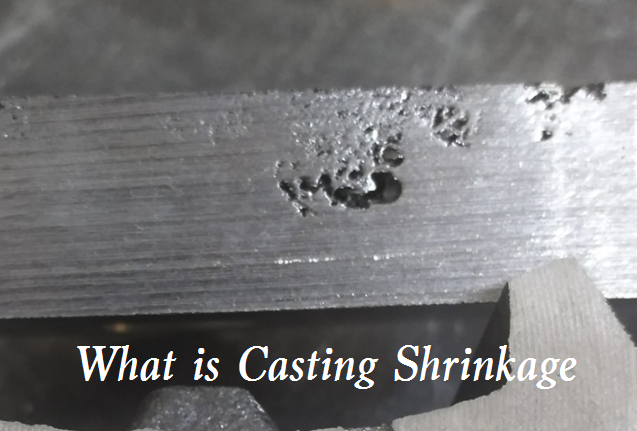Casting alloy shrinkage is the basic cause of many defects in castings and one of the important casting properties of alloys. What defects will be produced by alloy shrinkage and what factors affect the shrinkage?

What is Casting Shrinkage
Shrinkage is the phenomenon that the volume and size of cast alloys decrease in the process of liquid condensation and cooling to room temperature. It includes three stages: liquid shrinkage, solidification shrinkage and solid shrinkage. Liquid shrinkage is the volume reduction of liquid metal due to the decrease of temperature. Solidification shrinkage is the volume reduction of liquid metal during solidification (liquid state transformation to homomorphism). Liquid shrinkage and solidification shrinkage show the reduction of alloy volume, which is usually called volume shrinkage. Solid shrinkage is the volume reduction of metal due to the reduction of temperature in the solid state. Although solid shrinkage also leads to volume reduction, it is usually expressed by the size reduction of metal castings, so it is called linear shrinkage.
Casting Defects Caused by Shrinkage
Casting shrinkage not only affects the size, but also causes defects such as shrinkage cavity, porosity, internal stress, deformation and cracking. Therefore, the smaller the shrinkage rate of casting materials, the better. Shrinkage directly affects the quality of castings. If the liquid shrinkage and solidification shrinkage are not supplemented, the casting will have shrinkage cavity and shrinkage porosity defects. If the solid shrinkage is hindered, the casting internal stress will be generated, resulting in the deformation and cracking of the casting.
1. Shrinkage and porosity
Shrinkage cavity is a large concentrated hole that appears at the last solidification of the casting when the liquid shrinkage and solidification shrinkage of the metal are not supplemented. Shrinkage porosity is a small shrinkage cavity dispersed in the casting. Shrinkage cavity and porosity can reduce the mechanical properties of castings, and shrinkage porosity can also make castings leak during air tightness test and hydrostatic test. During production, the shrinkage cavity can be transferred to the riser of the final solidification by setting a riser at the thick wall of the casting, so as to obtain a complete casting. The riser is a redundant part, which can be cut off to obtain a complete and dense casting; It is also possible to prevent shrinkage cavities by reasonably designing the casting structure to avoid local metal accumulation in the casting.
2. Deformation and cracking
During the continuous cooling process of castings after solidification, if the solid shrinkage is hindered, the casting internal stress will be generated. When the internal stress reaches a certain value, the castings will be deformed or even cracked. The internal stress of casting mainly includes mechanical stress and thermal stress during shrinkage. Mechanical stress is the internal stress caused by external forces such as mold and core that hinder shrinkage; Thermal stress is the internal stress caused by the uneven shrinkage of different parts of the casting during cooling and solidification.
In production, in order to reduce the internal stress of casting, we often start with improving the casting structure and optimizing the casting process, such as the wall thickness of the casting should be uniform, or reasonably setting chill and other technological measures to make all parts of the casting cool evenly and solidify at the same time, so as to reduce the thermal stress; The structure of the casting shall be simple and symmetrical as far as possible, so as to reduce the shrinkage obstruction of the metal and reduce the mechanical stress.
What Factors Affect Shrinkage
The factors affecting shrinkage are divided into internal and external conditions.
1) Type and composition of alloy
The shrinkage rate varies with the type and composition of the alloy. The shrinkage rate of gray cast iron in iron carbon alloy is small, and that of cast steel is large. The following figure shows the linear shrinkage of commonly used cast alloys.
2) Process conditions
The pouring temperature of metal has an effect on the shrinkage. The higher the pouring temperature is, the greater the liquid shrinkage is. Casting structure and mold material also have an impact on shrinkage. The more complex the cavity shape is, the worse the concession of mold material is, and the greater the obstruction to shrinkage is. When the structural design of the casting is unreasonable and the yielding of the mold material is poor, the casting will produce casting stress due to blocked shrinkage, which is easy to produce cracks.

